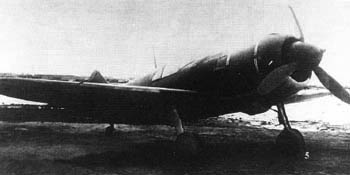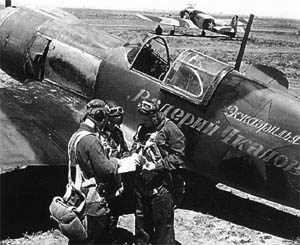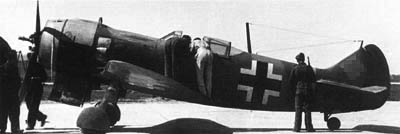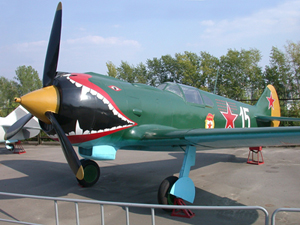 |
||||||
|
||||||
|
|||||||
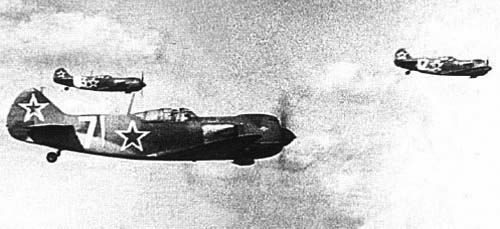 |
|||||||
| Lavochkin La-5 | |||||||
The La-5 Fighter was born, when the inline-engine driven LaGG-3 proved less successful than had been anticipated, and was modified to be powered by the Shvetsov ASh-82 radial engine. The new engine finally brought out the performance, that had been planned for the LaGG-3, but as Lavochkin worked alone on it, the new plane was simply called La-5. |
|||||||
|
|||||||
The original La-5 was brought into front service swiftly, where it showed great promise, even though it was still riddled with the typical bugs of the LaGG-3, such as constant oil leaks, bad ventilation in the Cockpit and a canopy, that wouldn’t open in cases of emergency. Still, it proved to be the first soviet fighter to match the performance of the |
|||||||
|
|||||||
| The La-5 was further developed, when an improved version of the ASh-82 engine, the ASh-82F, became available. The rear section of the fuselage was cut down to create a better view from the cockpit. Another improvement was the La-5FN which received a supercharged version of the ASh-82 engine. This required the addition of a air intake for the supercharger on the top of the cowling, which became the characteristic feature of the La-5FN. The La-5FN was the definitive version of the La-5, with its high performance, fast turn radius and heavy armament. |
|||||||
|
|||||||
| The La-5 was, like the LaGG-3, mostly build of wood, which made it heavier then metal-build aircraft, but allowed it to take a lot of damage. It also gave the rear fuselage a smooth, almost seamless surface. 9920 La-5’s of all versions, including the Trainer version La-5UTI, were build. After the end of World War II, most La-5’s were put out of service, as their wooden structure made them more difficult to preserve than their improved predecessor, the La-7. A few La-5’s were flown by the Czechoslovakian Air Force in their own Markings after the war. The most famous single La-5 was probably the La-5Fn “white 14”, which was flown by three leading soviet Aces: Snr. Lt. Pavel Bryzgalov, Capt. Kyrill Evstigneev and Capt. Ivan Kozhedub. Kozhedub went on to become the leading allied ace of World War 2 after converting to the La-7. |
|||||||
|
|||||||
| wingspan: 9.80m length: 8.67m height: 2.54m empty weight: 2.605kg max loaded weight: 3.265kg maximum speed: 648km/h range: 765km |
|||||||
| return to top | |||||||
